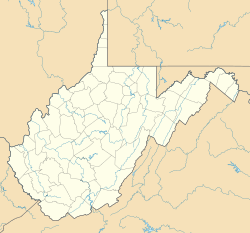Mingo, West Virginia facts for kids
Quick facts for kids
Mingo, West Virginia
|
|
|---|---|
| Country | United States |
| State | West Virginia |
| County | Randolph |
| Elevation | 2,644 ft (806 m) |
| Time zone | UTC-5 (Eastern (EST)) |
| • Summer (DST) | UTC-4 (EDT) |
| Area code(s) | 304 & 681 |
| GNIS feature ID | 1552161 |
Mingo, sometimes called Mingo Flats, is a small community in Randolph County, West Virginia, United States. It is known as an unincorporated community. This means it does not have its own local government, like a mayor or city council. Instead, it is part of the larger county.
You can find Mingo in the eastern part of West Virginia. It is located right on U.S. Route 219, which is a main road in the area. Mingo is about 15.5 miles (25 kilometers) south-southwest of a place called Huttonsville.
Contents
The Name Mingo: A Historical Connection
The name "Mingo" comes from the historic Iroquoian Mingo people. These Native American people were an important group in the history of this region. Naming places after Native American tribes or leaders is common in West Virginia and other parts of the United States. It helps us remember the original inhabitants of the land.
Who Were the Mingo People?
The Mingo people were a group of Native Americans who lived in parts of what is now Ohio, West Virginia, and Pennsylvania. They were closely related to the Iroquois Confederacy. They often moved between different areas for hunting and trading. Their history is an important part of the story of early America.
Geography and Location
Mingo is situated in a beautiful, mountainous part of West Virginia. The area is known for its forests and natural beauty. Being on U.S. Route 219 makes it easy to access. This road connects Mingo to other communities and natural attractions in the region.
Elevation of Mingo
Mingo is located at an elevation of 2,644 feet (806 meters) above sea level. This high elevation is typical for communities in the Appalachian Mountains. It means the area often has cooler temperatures and can experience more snow in winter compared to lower elevations.



